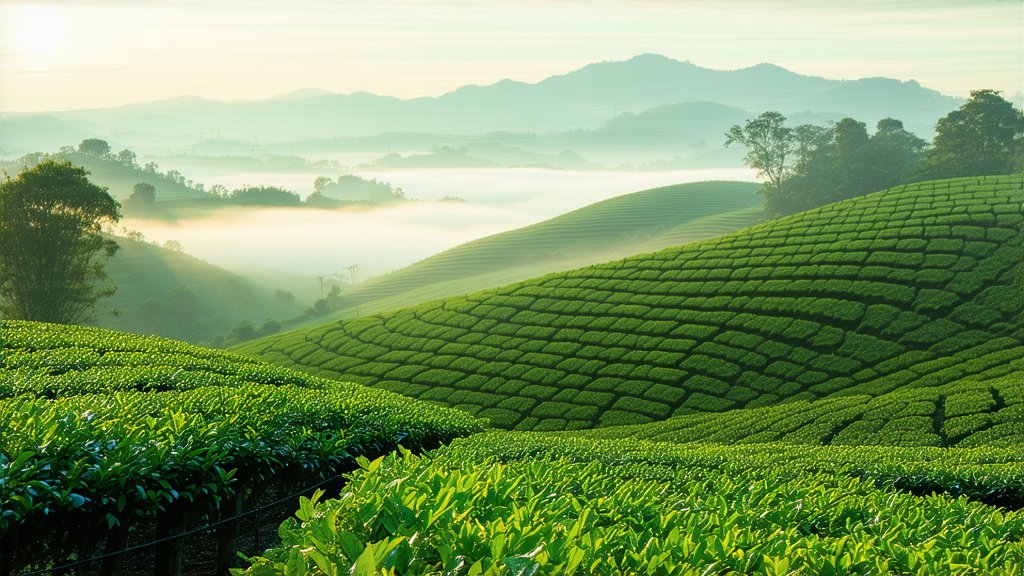
In the vast and diverse landscape of Chinese tea culture, where green, black, white, and oolong teas dominate the scene, there exists a lesser-known yet profoundly unique category—yellow tea (Huangcha). Among these exquisite varieties stands Junshan Yinzhen, a rare gem hailing from the misty mountains of Hunan province. This article embarks on a journey to unravel the mystique surrounding this golden elixir, delving into its historical roots, distinct types, intricate production process, and the art of savoring its nuanced flavors.
A Glimpse into History
The origins of Junshan Yinzhen trace back over a thousand years, intertwining with the rich tapestry of Chinese tea history. Legend has it that during the Tang Dynasty (618-907 AD), a tea master named Wen Zhengming stumbled upon the unique processing method while experimenting with different drying techniques for his green tea leaves. The result was a tea with a distinctive yellow hue and a mellow flavor, setting the stage for what would become known as Huangcha or 'yellow tea.' Over centuries, this serendipitous discovery evolved, with Junshan Yinzhen emerging as a prized specialty in the Hunan region, particularly around the Junshan Island in Dongting Lake.
Varieties within the Yellow Spectrum
Junshan Yinzhen is not a singular entity but rather a collection of premium teas that share similar characteristics yet possess subtle differences due to variations in cultivation, harvesting times, and processing nuances. Two prominent types are the Yinzhen Yacha and Yinzhen Micha:
-
Yinzhen Yacha: Harvested from young tender buds and leaves, this variety boasts a particularly delicate flavor profile with notes of floral sweetness and a silky texture. It's considered the epitome of luxury within Junshan Yinzhen.
-
Yinzhen Micha: Made from slightly more mature leaves than Yacha, Micha offers a fuller body and a more robust character while still maintaining the signature yellow tea mellowness. Its taste can be described as having earthy undertones complemented by hints of orchid and honey.
The Art of Crafting Junshan Yinzhen
The creation of Junshan Yinzhen is an artisanal endeavor that demands precision and patience. The process begins with the careful selection of tea leaves, typically picked in early spring when they are at their freshest and most nutrient-rich. Here’s a step-by-step overview of the traditional production method:
-
Fixation (杀青): Freshly plucked leaves undergo a gentle steaming or pan-firing to halt oxidation, preserving their natural green color and fresh aroma. Unlike green tea, this step in yellow tea production is milder, allowing for controlled oxidation.
-
Sealing (闷黄): The unique hallmark of yellow tea processing lies in this stage. The fixed leaves are wrapped in cloth or paper and left to 'sweat' under controlled humidity and temperature conditions for several hours. This slow oxidation process turns the leaves yellow and imparts a distinctive sweetness and smoothness to the tea.
-
Drying (干燥): Finally, the leaves are dried slowly over low heat to remove any remaining moisture without compromising their delicate flavors. This step ensures longevity and stability for storage and transportation.
Savoring the Symphony of Flavors
To truly appreciate Junshan Yinzhen, one must engage in the ritualistic practice of tea tasting, known as 'Gongfu Cha'. Here’s how to embark on this sensory journey:
-
Preparation: Use a Gaiwan or Yixing teapot to enhance the tea's aroma. Rinse the vessel with hot water to warm it up.
-
Infusion: Take approximately 3-5 grams of Junshan Yinzhen per 150ml of water. The ideal water temperature ranges between 75-85°C (167-185°F). A lower temperature preserves the tea's subtle flavors.
-
Steeping: The first infusion should be brief, around 15-30 seconds, gradually increasing with subsequent steepings. Each brew reveals different facets of the tea's complexity.
-
Observation: Admire the bright yellow liquor, a testament to the tea's quality. Note its clarity and viscosity.
-
Aroma: Inhale deeply before sipping to detect the tea's fragrant bouquet, which may include floral, fruity, or woody notes.
-
Tasting: Sip slowly, allowing the tea to coat your palate. Pay attention to the initial sweetness, mid-note umami, and the lingering aftertaste. Junshan Yinzhen is celebrated for its balanced flavor profile, smooth texture, and lack of bitterness or astringency.
-
Reflection: Take a moment to appreciate the harmony between the tea and your senses, contemplating its history, craftsmanship, and the natural environment that nurtured it.
In conclusion, Junshan Yinzhen stands as a testament to China's rich tea heritage and the artistry involved in tea making. Its golden hue, mellow taste, and intricate production process make it a captivating subject for tea enthusiasts worldwide. As you embark on your exploration of this extraordinary yellow tea, remember that each cup tells a story—a tale of nature's bounty, human ingenuity, and centuries-old traditions passed down through generations. Embrace the serenity it offers and let Junshan Yinzhen transport you to the tranquil hills of Hunan, where every leaf whispers secrets of ancient wisdom.